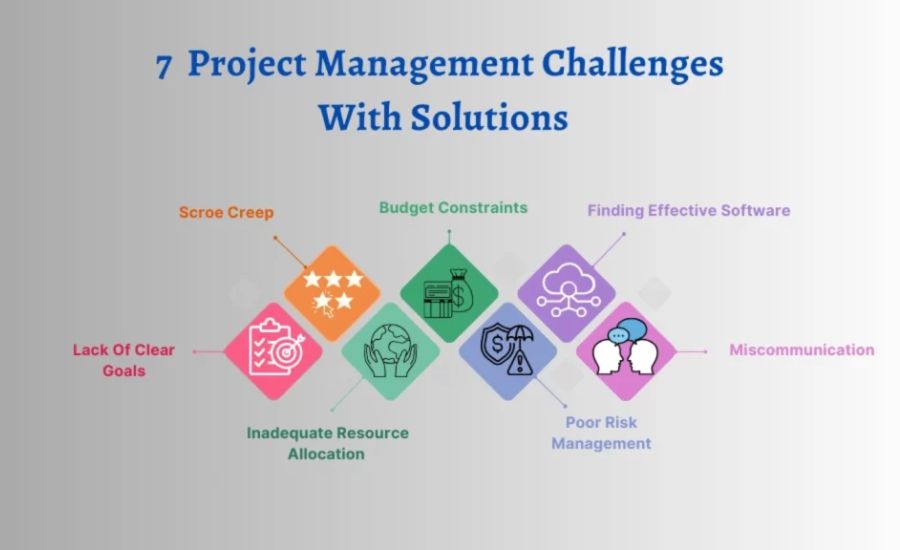If you’ve ever worked in a product company, you know the feeling of starting new projects with excitement, clear goals, and ambitious deadlines. But somewhere along the way, things start to unravel. Customers change their minds, deadlines slip, teams get overwhelmed, and before you know it, everyone is in full-blown firefighting mode, scrambling to fix problems that could’ve been avoided. Sound familiar?
Delivering projects successfully is no easy feat. Product companies are constantly juggling customer expectations, resource planning, shifting priorities, and interdepartmental collaboration, all while trying to stay profitable and innovative. So, how do you keep the chaos at bay?
In this article, we’re diving deep into the biggest challenges product companies face when delivering projects and more importantly, how to overcome them. Whether you’re a project manager, a product lead, or an executive trying to steer the ship, this guide will help you navigate the obstacles and build a smoother, more predictable path to success. Let’s get into it.
The Struggle to Satisfy Customers Without Constant Firefighting
Customer satisfaction is at the center of any successful product company. When customers feel valued and heard, they are more likely to remain loyal and spread positive word-of-mouth. However, achieving this without being in perpetual firefighting mode is no small feat. Firefighting, in this context, refers to the frantic, short-term problem-solving approach teams resort to when they lack strong processes or proactive planning.
One major reason companies find themselves in a cycle of firefighting is the unpredictability of customer demands. Customers might suddenly request urgent changes or uncover hidden bugs, forcing product teams to rush toward solutions without proper planning. This rushed environment can lead to mistakes, poor communication, and stress among team members. Another factor is the lack of clarity on the project scope. When organizations promise deliverables without fully defining their requirements, it’s only natural that surprises will crop up down the road.
To break free from the firefighting trap, companies should invest in ongoing communication with customers throughout each project’s lifecycle. Rather than waiting until the last minute, regular check-ins allow teams to anticipate needs and clarify misunderstandings early on. Additionally, establishing robust internal processes such as sprint planning, daily stand-ups, and retrospective meetings creates a proactive culture. This culture not only identifies potential risks before they explode but also preserves morale by keeping workloads balanced. A deliberate approach to project management fosters a calmer, more predictable environment for both the company and its clientele.
Anticipating and Allocating Resources Effectively
Resource allocation stands as one of the most significant operational tasks for product companies. The ability to anticipate staffing and materials before they’re urgently needed is critical to a project’s success. However, organizations often underestimate project complexities, resulting in under-allocation or over-allocation of resources. Either scenario can be detrimental as under-allocation can lead to delayed timelines, while over-allocation can inflate budgets and burn out teams.
A key challenge is accurately forecasting demand. Sometimes, companies can be overly optimistic in their projections, or they might get blindsided by sudden market shifts. For instance, a new product feature might prove more popular than anticipated, leaving engineers scrambling to boost capacity. Conversely, an expected surge in orders might never arrive, stranding the company with extra headcount or unused materials. In such instances, organizations could consign surplus inventory as a practical way to optimize resources and avoid waste.
Successful organizations are those that create robust planning models and adopt agile methodologies. Agile frameworks allow companies to pivot quickly when faced with changes in scope or demand. Furthermore, leveraging modern project management and resource planning tools helps provide real-time insights into staff workloads, progress tracking, and potential bottlenecks. By understanding capacity constraints early, product leads can re-prioritize tasks, bring in additional help, or scale back on less critical features. In short, anticipating resource needs is a continuous, iterative process rather than a one-time exercise.
Keeping Staff Aligned on Priorities
Even the most brilliantly scoped project can falter when teams lack clarity on their roles and responsibilities. Product companies often juggle multiple projects simultaneously, each with its own urgency and deliverables. Without a clear system for communication and prioritization, employees can feel overwhelmed, confused, or pulled in several directions at once.
One common stumbling block is inconsistent goal setting across different departments. Marketing might be focused on maximizing user engagement, while engineering prioritizes bug fixes, and the finance department is laser-focused on budgets. If these goals aren’t reconciled, clashes will inevitably arise. Additionally, rapid changes in project scope or sudden customer escalations can disrupt well-laid plans, leaving teams unsure where to direct their efforts first.
Leaders can combat these issues by regularly communicating the company’s overarching goals and linking them to specific tasks. When employees understand why a particular project or feature matters, they’re more likely to stay motivated and aligned. Clear roadmaps also help; by outlining milestones and deadlines, project managers can guide team members on where their immediate focus should lie.
Encouraging Cross-Functional Collaboration
Modern product development typically requires coordination among multiple units such as engineering, design, marketing, sales, quality assurance, customer service, and beyond. Each of these functions brings a unique perspective to the table, yet their objectives can sometimes clash. Engineers, for instance, might be focused on building scalable architecture, while design wants a polished user interface. Marketing and sales might push for a faster release, whereas QA insists on thorough testing to avoid embarrassing bugs.
The friction between these groups can stall progress or lead to compromised outcomes if it isn’t managed carefully. Miscommunication is a classic culprit for disaster; one department might assume another group has addressed a particular requirement when, in reality, no one has taken ownership. In other instances, distinct cultures and terminologies can create barriers. For example, software developers often talk in technical jargon that might mean little to a marketing manager.
A structured yet flexible collaboration framework helps break down these silos. Regular cross-functional meetings, clear documentation, and shared terminology can harmonize efforts. Additionally, creating cross-departmental task forces or “tiger teams” can be an effective strategy for tackling high-priority issues. When everyone shares accountability for project outcomes, there’s a stronger incentive to avoid finger-pointing and focus on finding the best solution for the organization.
Properly Scoping and Pricing Projects
A project that’s poorly scoped or priced is destined for trouble. Organizations that routinely overpromise or undercharge will eventually face a daunting list of unhappy clients, frustrated teams, and budget overruns. Customers expect transparency and reliability, meaning a company’s ability to meet deadlines and stay within quoted costs directly impacts its reputation.
One of the most pervasive mistakes is rushing to finalize a contract or project scope before fully understanding the requirements. In the rush to win business, sales teams might gloss over technical complexities or ignore hidden costs. Once the project kicks off, these unanticipated tasks come to light, requiring either extra budget or scope cuts to remain feasible. Another issue is the failure to account for potential changes or expansions. The more complex a project, the more likely it will evolve over time, so building some level of contingency into pricing and timelines is essential.
To address these issues, product companies should refine their scoping processes with detailed requirements gathering and feasibility assessments. During the sales process, creating accurate estimates of time, labor, and materials prevents sticker shock later on. Moreover, it’s crucial to remain flexible including mechanisms for change requests so both parties can clearly agree on cost implications if the scope shifts.
Conclusion
Ultimately, every challenge can be reframed as an opportunity for growth. By taking a holistic view by investing in culture, communication, and continuous improvement, organizations can transform project delivery from a frantic juggling act into a deliberate, well-coordinated strategy. The result is happier teams and customers as well as a more resilient enterprise ready to adapt and thrive in the face of change.




